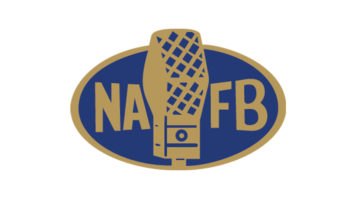The author is owner of WRNJ(AM) in Hackettstown, N.J. This is part of a series featuring comments (filed to the FCC, or sent to Radio World) about AM revitalization.
I’ve read all the effusive articles in RW about AM improvement and can’t help but wonder what is really going on, behind the scenes that is.
I sense that the broadcast spectrum is slowly shrinking (UHF TV auctions, for example). Consider that the tens of millions of dollars spent to move television to new spectrum is far more than it would cost to move AMs to vacant Channels 5 and 6 as other countries are doing.
Is it possible that AM improvement ideas are really attempts to “keep ‘em down on the farm” and avoid any tangible improvement at all? Consider that any real improvement is future competition for large group owners, financially heavily encumbered, companies with huge debts to pay.
Let’s look at it from the local AM station’s point of view. IBOC or iBiquity uses a pay-to-play approach. That’s bad. I think their interest is not AM improvement, rather their bottom line. Take a moment to see who the iBiquity stockholders are. That bottom line is in bad shape. Some stations have discontinued IBOC transmissions. Others don’t receive even one phone call if the HD Radio is down.
So IBOC and digital AM is out. Has any country on this planet gone for digital AM or even proposed it? Just one, right?
How about shrinking broadcast spectrum? The FCC is allowing television licensees to effectively auction away some, or all, of their new UHF HD spectrum to be used for data. Now, who is going to buy that spectrum, in all probability?
Could it be Verizon or the other massive spectrum licensees who are now providing broadcast type services with their data streams? Yes, I think so. But there’s no spectrum there for AM improvement, which would be tantamount to improved service to the public.
By the way, do the spectrum “licenses” bought by the cell providers have expiration dates of 3 a.m. EST as ours do, or are they not licenses but rather spectrum Bills of Sale?
So where’s this going?
We have very large companies now owning broadcast facilities (investing in iBiquity) and experiencing rather minimal competition in their marketplaces except amongst themselves. They bought up all the “best” properties with unlimited, albeit borrowed, money. These very same companies are major “stockholders” in the NAB, the organization that’s supposed to represent all broadcasters. Remember, the NAB does not represent the listening public, only the (substantial) broadcaster.
Let common sense in here for a moment. Do readers think for a moment the NAB and group owners are going to let new-and-improved broadcast services to the public happen?
I don’t think so; and the proof is in the Channels 5 and 6 pudding. There sits available, idle, mostly vacant, not digital-TV-friendly spectrum. At present that same spectrum is being converted to serve the public in other countries (some considered “third-world”) as we hold back new and improved service to our local public here. See the recent article in Radio World about Brazil, fifth-largest population in the world changing AM to Channels 5 and 6 (“Brazil Broadcasters Push AM Migration,” radioworld.com, keyword Brazil).
Spectrum similar to what we use for AM has been abandoned by LORAN, non-directional beacons and other countries because it is unfit for public service anymore. Keeping AM where it is protects highly leveraged properties of large companies. It’s that simple. The public interests in local service are not being seriously considered.
What’s the answer? One answer is your local congressman. In New Jersey, a local broadcaster in a large city was a tennis buddy of the late Rep. Matthew Rinaldo, who slipped into an unrelated bill that any city with more than 100,000 residents must have a full-time AM radio station. Elizabeth, N.J., gained a full-time AM station. It was that easy.
That’s the fast way of solving the AM problem. Got friends in Congress who want their constituents to have superior, full-time radio service? If so, familiarize yourself with the advantages of the Channel 5/6 transition at www.broadmax.org. For an example of how easy it is to change and expand the use of spectrum, see http://1.usa.gov/1eNAEgu.
To file your own comments at the FCC go to http://apps.fcc.gov/ecfs//, click on submit a filing and then enter 13-249 in the proceeding number box and you are good to go. This refers to MB Docket No. 13-249, the “AM Revitalization” NPRM. [Ed. Note: As of press time, public comments were due Jan. 21 but the FCC will take reply comments through Feb. 18.]
I don’t think it could be any clearer that the only improvement to the AM band is the transition to new spectrum as others are already doing. Anything else appears to limit competition in broadcasting and limit benefits the public has a right to expect.Other proponents of an AM transition to the Channels 5 & 6 band could well be the SESAC, BMI and ASCAP organizations; it would mean more exposure for their members along with improved local service to Americans everywhere.











